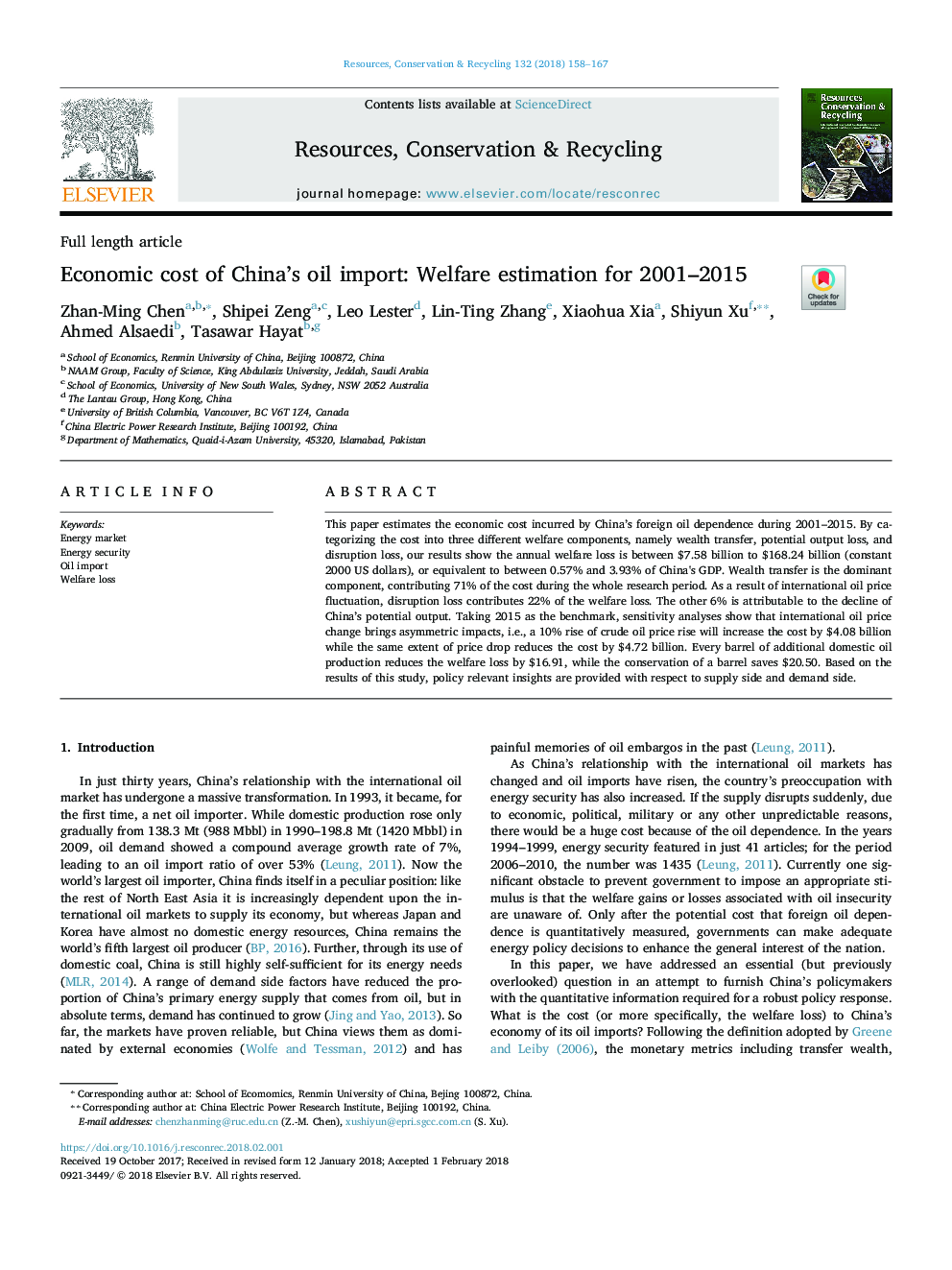| Article ID | Journal | Published Year | Pages | File Type |
|---|---|---|---|---|
| 7494339 | Resources, Conservation and Recycling | 2018 | 10 Pages |
Abstract
This paper estimates the economic cost incurred by China's foreign oil dependence during 2001-2015. By categorizing the cost into three different welfare components, namely wealth transfer, potential output loss, and disruption loss, our results show the annual welfare loss is between $7.58 billion to $168.24 billion (constant 2000 US dollars), or equivalent to between 0.57% and 3.93% of China's GDP. Wealth transfer is the dominant component, contributing 71% of the cost during the whole research period. As a result of international oil price fluctuation, disruption loss contributes 22% of the welfare loss. The other 6% is attributable to the decline of China's potential output. Taking 2015 as the benchmark, sensitivity analyses show that international oil price change brings asymmetric impacts, i.e., a 10% rise of crude oil price rise will increase the cost by $4.08 billion while the same extent of price drop reduces the cost by $4.72 billion. Every barrel of additional domestic oil production reduces the welfare loss by $16.91, while the conservation of a barrel saves $20.50. Based on the results of this study, policy relevant insights are provided with respect to supply side and demand side.
Related Topics
Physical Sciences and Engineering
Energy
Renewable Energy, Sustainability and the Environment
Authors
Zhan-Ming Chen, Shipei Zeng, Leo Lester, Lin-Ting Zhang, Xiaohua Xia, Shiyun Xu, Ahmed Alsaedi, Tasawar Hayat,
